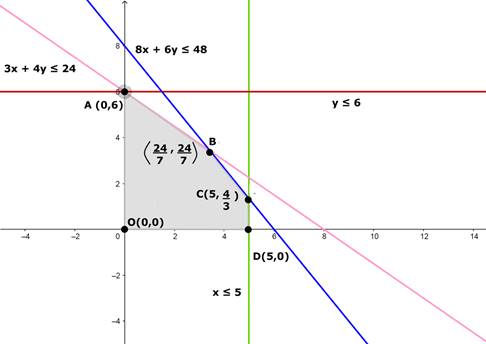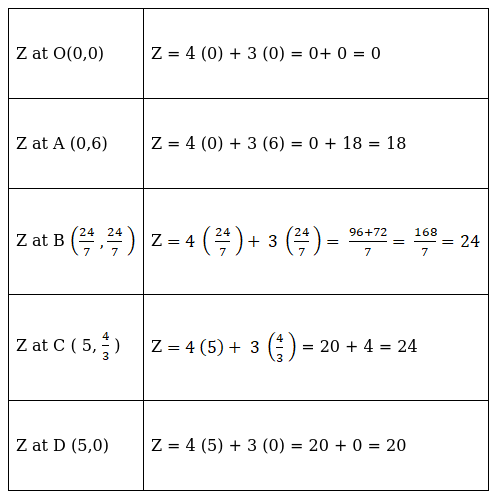The objective function Z = 4x + 3y can be maximized subjected to the constraints 3x + 4y ≤ 24, 8x + 6y ≤ 48, x ≤ 5, y ≤ 6; x, y ≥ 0
Given the objective function is Z = 4x + 3y
Constraints are:
3x + 4y ≤ 24
8x + 6y ≤ 48
x ≤ 5
y ≤ 6
x ≥ 0
y≥ 0
If we consider these inequalities as equalities for some time,
We will have
3x + 4y = 24
8x + 6y = 48
x = 5
y = 6
x = 0
y= 0
If we plot all these lines on a graph we will have optimal area formed by the vertices, OABCD.

Now, to find where the function Z has maximized, let us substitute all these points in the objective function Z.

Here, we can clearly see that, the function Z is maximized at two points B & C giving the value 24.
There will be infinite/multiple optimal solutions for a LPP if it has more than one set of optimal solutions that can maximize/ minimize a problem.
This will clear the fact that, the function Z will maximize at infinite number of points.
Hence the answer is option C.